Affiliate marketing is one of the major revenue-generating sources for publishers and advertisers.
According to a survey, 31% of publishers say it is their second major source of generating revenue, while for 9% it is their primary source of revenue.
Over 80% of brands around the globe reportedly have an affiliate program to boost sales and revenue.
This is not so surprising as another report suggests that 15%-30% of sales are generated from affiliate promotion.
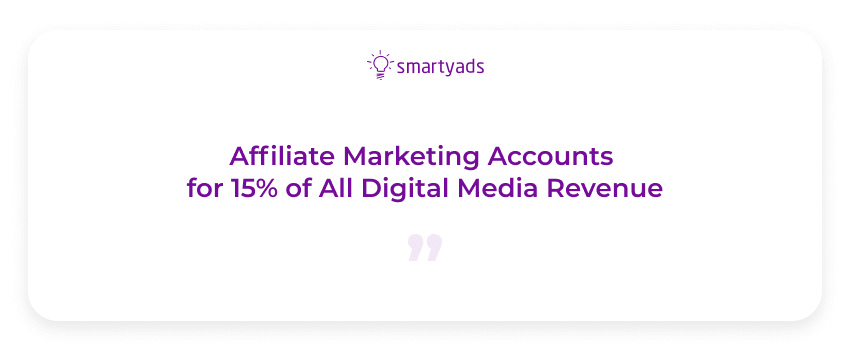
It accounts for 15% of digital media revenue according to stats. Notwithstanding, many brands and publishers, especially new entrants into affiliate promotion consider traffic generation as a major challenge to their business.
The success of affiliates strongly relies on the ability to generate traffic that can possibly lead to conversion and of course more revenue.
And for many, the question would be how to generate traffic and enhance conversion for their affiliate business.
Affiliate marketing has numerous benefits and there are myriad strategies on how to get traffic using it.
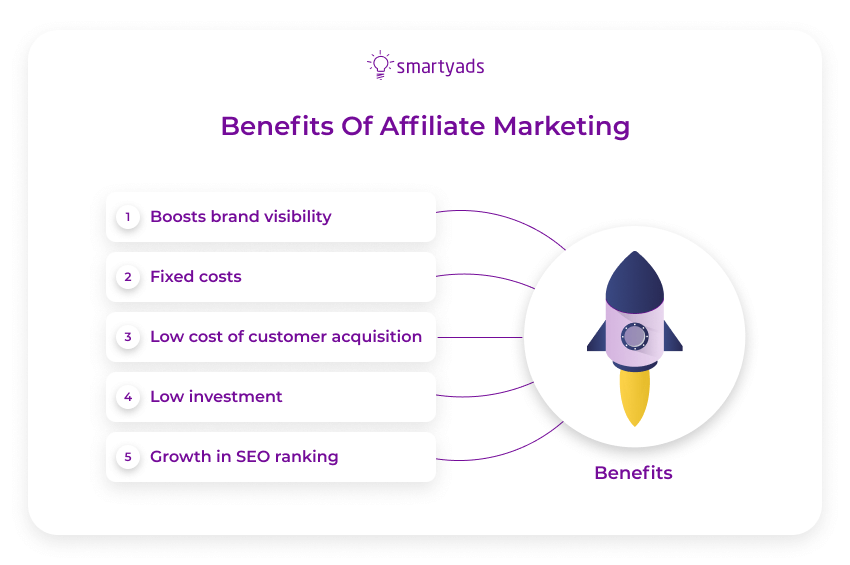
This article is going to reveal some major traffic sources you can employ to scale your affiliate business. Read on to find out.
What are affiliate traffic sources?
For marketers, traffic sources are the platforms that they can serve their advertisements on to generate leads and conversions. These sources are either paid-for or free traffic.
Here's how affiliate marketing works if we sum it up in a few steps. Read more about it in the article best traffic sources for affiliate marketing in a full guide.
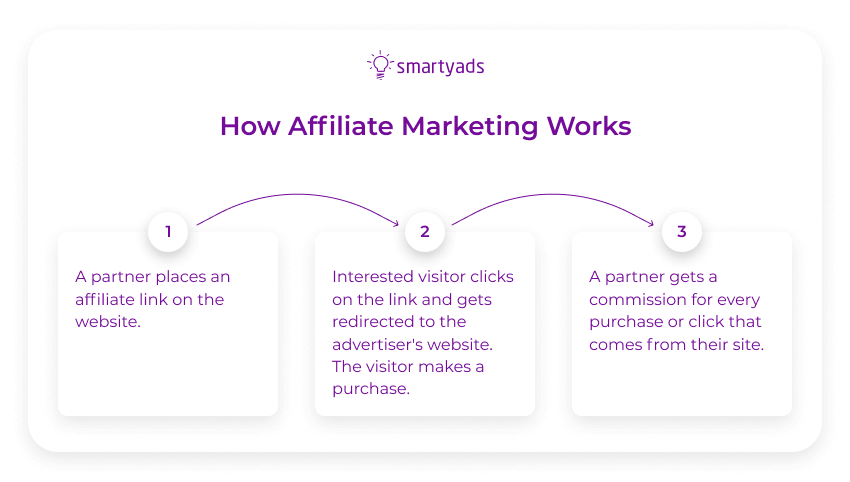
What are free traffic sources?
Just as what “free” implies, a free traffic source means that you are generating your website traffic organically and not paying money for your visitors.
Many people erroneously believe that they need to have a bogus budget to build traffic for their affiliate business.
Admittedly though, taking the free route would require hard work, patience, perseverance, and diligence, because it entails building organic traffic.
Let us explore some free affiliate marketing traffic sources.
Blogging
Starting a blog is one of the most popular free traffic sources for digital marketing. It is an efficient tool for publishers who are looking to build an audience that can convert and engage in content marketing.
Launching your own blog would most likely cost you some money and other recurring expenses but it is still a cheap yet efficient means to drive affiliate traffic.
While you may be paying for setting up the blog, there are no direct expenses for generating traffic; your content should handle that.
Pointers for blogging
Always remember that blogging and content marketing requires creating lots of useful articles on the regular basis. You have to ensure quality content at all times because people will always be attracted to value.
As a publisher, you may choose to blog about anything from fashion to tech, celebrity gossip to sports, or whatever you fancy and are knowledgeable about. Importantly, it is always better to advertise such affiliate products and services that your audience can relate to.
SEO
According to research, SEO contributes to 69.22% of affiliate marketing global traffic, making it the most popular traffic source for affiliate marketers.
If you already have a blog or website to promote your affiliate business and you’ve not optimized it for search engines, you’re wasting opportunities.
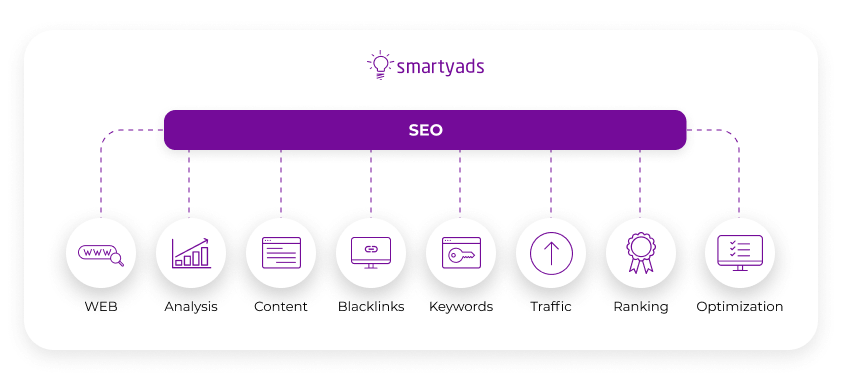
What is SEO?
SEO means Search Engine Optimization, it is the process of enhancing the visibility and reach of your affiliate website.
Look at it this way, there are billions of websites on the Internet and probably a few hundred or thousands more in your niche.
When someone conducts a Google search, the Google crawler rates all of the Web pages that provide relevant information.
The audience is then shown the web pages in order, from the most relevant to the least relevant. Most times people only open the first few websites while ignoring the rest.
As a result, when you perform search engine optimization, you are improving your website's ability to rank better on Google and other search engines, hence increasing traffic.
Guest posting
Guest posting is a subtle yet excellent strategy to get free traffic for affiliate promotion. It involves contributing content to other websites and publishers.
If there are other publishers in your niche or a niche you are interested in, you may approach them to write content for their audience.
Guest posting does not require you to make any payment but sometimes comes with conditions.
Some publishers may allow you to mildly promote your affiliate link, product, or blog by inserting outbound links within the content.
eBook
Do you love to write, and share your knowledge with other people? Then writing an eBook may just be your magic wand.
If you’re a good writer with the ability to keep your audience hooked, write an eBook and insert an affiliate link within the book.
If your readers are happy about the content of your eBook, then you’re sure you will be converting a good number of them in a short while.
Your eBook may be free or paid for; that is you put it up for sale on Amazon and still make passive income from the sale of each copy.
Also, by spreading eBooks you can build an email list which is also a free traffic source.
Email marketing
You must have heard or read somewhere that email marketing is old-school. Well, purge yourself of that idea because emails are still incredibly effective.
According to predictions, 333.2 billion emails will be sent in 2022, and 87% of marketers actively use email marketing to deliver content.
The best and free way to go about email marketing is by building an email list. You can do this by including opt-in forms on your website or social network pages where users can enter their email addresses.
Another way of building an email list is to offer gifts and incentives, such as a discount or a free eBook but with a condition that it is only accessible via email.
Social media
We cannot talk about free traffic sources without including social media. There are currently about 3.5 billion active social media users and this number is only going to increase.
The important thing is that most of the social media platforms are free and you can take advantage of their large audience to run marketing.
Platforms like Instagram, Facebook, and Twitter have a huge audience. You can promote affiliate links on your page or profile.
You can also join Facebook groups that allow you to promote products and services.
But, stick to the rule book!
You should know that most social platforms have rules and policies guiding the kind of products and services that may be promoted.
For example, Facebook prohibits promoting products across some niches.
Other social media platforms that are also great for affiliate promotion include; TikTok, Clubhouse, Snapchat, etc.
More free traffic sources include:
Quora
Quora is a social question-and-answer website with a monthly active user base of over 300 million people.
Quora is distinct from other social media sites in that it emphasizes professionalism and instructional information over entertainment.
Directly posting affiliate links is against Quora's guidelines, but you can still subtly target readers by including relevant outbound links in your answer that redirect to a homepage or landing page.
Reddit is a popular online community with a large user base. Many people use it to seek answers, recommendations, and suggestions on a variety of topics.
On this platform, you may target visitors based on their interests and how they relate to your affiliate product.
While direct marketing isn't feasible on Reddit, marketers can contribute valuable content and add affiliate links to their posts.
Medium
Medium is a great place to begin blogging and writing original content.
The online platform already has a large audience and you can build your own followership by publishing relevant and valuable content on the platform.
Affiliate links or links to an affiliate site may be naturally included in medium posts to drive traffic and engagement.
Youtube
Starting a youtube channel can be a great way to drive free traffic to your affiliate site or sell your product.
Youtube allows you to upload video content that people can view. You can make interesting videos and include links in the video.
Although making youtube videos can get expensive if you choose to get filming equipment, you may begin recording videos with your smartphone if it has a good camera.
Podcasts
Audiences for audiobooks, podcasts, and other audio content are rising, and more people are becoming interested in them.
If speaking is something you enjoy doing and you can give value through an audio message, it's a good method to promote your affiliate product as well.
Benefits of free traffic sources
The main benefit is that you don't no need to engage an advertising network, purchase traffic, or pay for ads.
Let's see what free traffic sources can do for affiliate marketers.
- Helps to build a sustainable audience
Most non-paid traffic methods help you to grow not just an audience but a fanbase that will be potential customers.
For instance, if you own a blog and you regularly post valuable content, it is normal to have regular visitors who voluntarily access your blog often.
It is the same with social media, you have to build an audience who will always follow you.
This strategy entails primarily focusing on growing your initial audience, after which you can rely on your large following base to continue your campaign efforts.
- Working at your pace
Because you are not spending money, you will not be under pressure to get things done.
You can experiment with different ways without concern of wasting money, and eventually develop a traffic-generating plan that works.
Disadvantages
Free traffic isn’t always the best practice to follow, here's why:
- Slow process
It takes time to build organic traffic, most times, you have to consistently develop valuable content and keep your target audience engaged for a substantial period of time.
- No guarantee of success
The truth is that you may not always receive the intended result with organic traffic because you are relying on ever-changing SEO algorithms or the tastes of people who read your blog.
This differs from purchased traffic, which delivers fast and guaranteed results.
Paid traffic sources for affiliate campaigns
It might be challenging to generate traffic for your affiliate business, especially if you prefer to do so organically.
If you don't have the patience to wait and have set a budget, paid traffic will suffice.
Paid traffic is typically seen to be more effective since it allows you to employ targeting tools to reach a more precise and relevant audience, thereby increasing impression and conversion rates.
Keep in mind that not all paid traffic is productive, so you must be cautious and carefully weigh your options to determine which paid techniques will provide the most value and outcome for your niche and product.
Important points to consider before picking a paid traffic source
Here are important points to note if you want to master the sources for affiliate marketing;
- Your budget
There are various kinds of paid traffic sources and they all come at different costs. Sometimes the price for a paid advertising is determined by the duration, number of impressions, or traffic quality.
For example, running a Facebook ad for one month will cost more than running the same ad for one week. Running advertising campaigns on a different platform and, let's say for different geos, through different marketing channels will also require different budgets.
Also, the cost of running Facebook ads has different pricing from Google ads.
You have to make your decisions based on your budget. Examine your alternatives and know their individual cost, then make a choice that provides the best value within your budget range.
- Source policies and restrictions
Every source you intend to engage with has its policies, restrictions, and regulations.
You should be aware of these regulations before making any financial commitments or commencing with advertising campaigns or you risk losing your money and getting banned by the source.
For instance, you cannot promote adult or gambling niche content on the regular ad networks, Facebook also has some strict policies regarding promoting political and pharmaceutical content.
Familiarize yourself with these policies and check if there are any restrictions with your preferred affiliate product before making a decision.
- Targeting and delivery
Targeting is one of the reasons why you will want a paid traffic source. Paid sources offer efficient and precise targeting functions that can help you achieve your conversion goals in a short time.
But targeting is wide and encompasses varying metrics.
For instance, you may choose to target according to any of the following indices;
- Location
- Age
- Gender
- Population
- Interests
- Profession
- Marital status
- Educational background
- Language
- Behavior, etc
The issue is that not all sources provide all of the targeting possibilities. Some are geographically restricted, while others may simply lack robust targeting options.
Before you use a traffic source, you need to know what required targeting choices are available to you.
You must make sure that the targeting options provided by a source are capable of producing the intended results.
You can leverage an ad network to enhance your advertising efforts and targeting.
- The niche and audience type
Your affiliate niche and choice audience should be a major factor in choosing your traffic source.
For example, if you are targeting a Chinese audience based in China, you know you cannot use Twitter and Facebook to drive traffic (since they have certain social media restrictions).
To ensure that you are doing the right thing, you should ask certain questions like:
Can this platform generate relevant traffic?
Do they have support for my niche?
The answers to the above questions will determine if you should go on with the source or not.
- The integrity of your traffic source
Traffic fraud is real and it’s a major problem that costs advertisers millions of dollars annually. Some sources and networks employ fraudulent bots to increase impression count.
These fake impressions would be presented as real human traffic and you will have to pay for them.
One of the ways to identify fake traffic is when impression rates are high, but conversion rates are very low.
- The traffic size
Networks and traffic sources have different capacities for generating traffic. While some sources have access to various locations and a huge audience, others have a restricted reach and audience.
However, a wide reach does not guarantee the best outcome.
Sources with a lesser reach can sometimes be more specialized and hence are better for niche targeting.
Finally, deciding on a source based on traffic size should be about your goals and objectives.
Best paid traffic sources
So we have talked about free traffic, now let’s check out some paid sources you may want to consider.
Mobile traffic
Did you know that in 2021, mobile generated more than 54% of the global internet traffic, and more than 90% of internet users accessed the web using a mobile device?
Well, the truth is the world has gone mobile and you certainly cannot get it wrong with mobile traffic.
Almost every person today owns a smartphone so it only makes sense that you target mobile users through various mobile advertising channels.
There are various ways to generate mobile traffic but one of the more popular is mobile video advertising. People consume a lot of video content and a majority do so through mobile devices.
You can also explore other mobile advertising formats like in-app ads, native ads, etc. Importantly, you may need to engage an ad network to generate money online with mobile traffic.
Search traffic
Google is the most popular search engine and it generates a lot of traffic every second. You can take advantage of the high traffic this search engine generates by displaying ads to people on search results pages.
Search traffic can either be organic traffic or search advertising, also PPC advertising.
PPC or search advertising usually appears within the search results pages presented by the search engine.
For example, when a user searches for “best hotels in Las Vegas” your affiliate ad on a hotel in Vegas would appear on the search result page.
Paid social media advertising
Most social media platforms provide paid advertising services that an affiliate marketer can utilize to generate traffic.
With the increasing number of social media enthusiasts, top media sites like Facebook, Instagram, and Twitter, can be very productive in generating traffic for affiliate products.
While social media can be used for free traffic, paid advertising services will bring faster and more high-quality traffic.
This is because of targeting tools and support for interactive ad formats like video ads that can engage an audience.
For instance, Facebook ads can allow you to target an audience based on certain demographics and metrics such as age, gender, location, interests, profession, marital status, etc.
Advertising on social media often comes with restrictions that affect the kind of affiliate product that may be promoted.
Ensure that you understand the level of restrictions on every platform and that they do not affect your business.
Banner ads
Banner advertisements are popular traffic-generating methods and ad formats that can be used on websites and mobile sites.
They appear in different sizes and shapes and can occupy any ad space on a screen.
Banner ads are often clickable and redirect a user who has clicked on them to a landing page, affiliate website, or product page carrying further descriptions about the affiliate product.
Banner ads are a common and least expensive method of delivering digital marketing, still, they are considered less effective since viewers are prone to banner blindness. Banner blindness occurs when users unconsciously ignore banner ads.
For better results, engage an advertising network to enable you to display ads on various publishing platforms.
Native ads
Native ads are types of advertising formats that are designed to suit the form and structure of the content on the website or app, they easily blend in with the user activity on the platform.
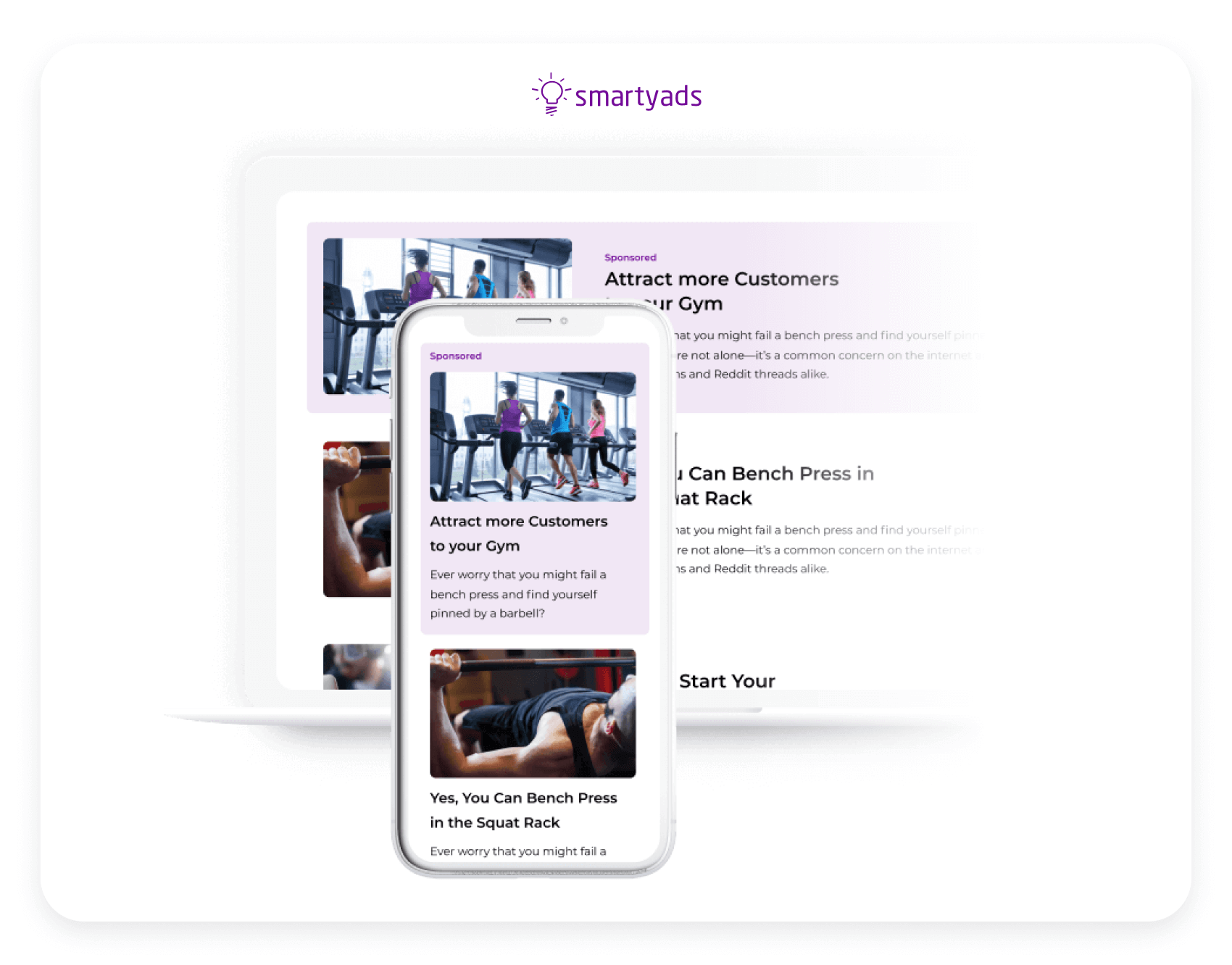
With native advertising, users do not always feel like they are viewing promotional content at first glance allowing them to interact with the marketing campaigns naturally.
Native advertising is becoming more popular for advertisers because they are less disruptive than most other ad formats thereby recording a higher rate of engagement and conversion, and generating high-quality traffic.
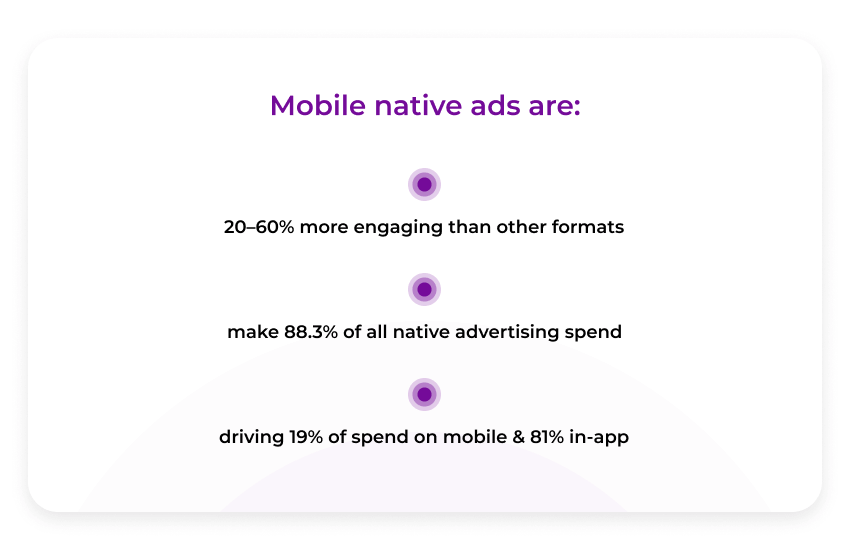
According to our statistics, native advertising promotes purchase intent by 18% and has 20-60% greater engagement rates than banner ads.
It's also worth noting that there are numerous native ad formats to choose from; however, an important consideration is how the advertising process is simplified in this case. This is where DSPs come into play.
DSP (Demand-side Platform) is a technology that streamlines the buying and selling of ads online. For marketers and other parties involved, it is a digital solution that enables them to search for the best inventories to place their advertisements based on a set of criteria they provide.
The advertiser or agency selects these criteria from a list of options. For instance, an advertiser may sort the publisher's inventory based on audience segmentation or advertising type (examples: video, mobile, desktop, etc.).
Importantly, with DSP, the previously time-consuming and inefficient search and sorting processes have been automated. Smartyads DSP provides native traffic and the most cutting-edge trends in native advertising, making it an ideal choice for advertisers.
Push notification advertisement
Push notification ads are very popular these days.
Just like push notifications, a push ad is delivered to a user’s device and a prompt appears on the screen informing the user of the ad.
Although this ad format is not yet so rife among marketers and ad networks, its efficiency in enhancing engagement and driving traffic makes it a potent affiliate advertising tool.
According to reports, the average open rate for push notifications is 90%. This is a 50% increase over email marketing, indicating that push notifications can reach more people.
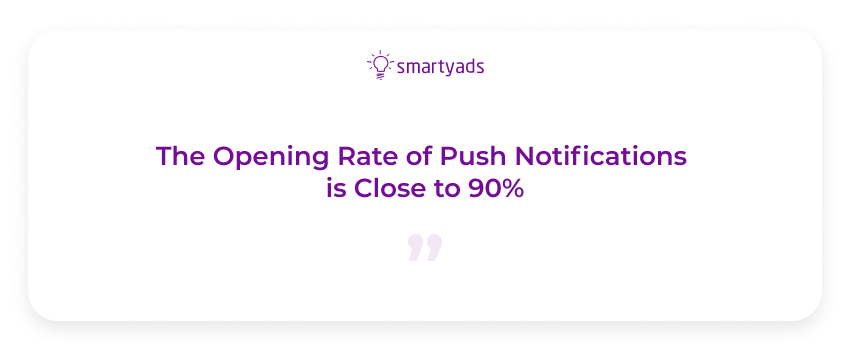
You might be wondering why push traffic seems to be so effective.
For starters, push traffic only consists of willing subscribers; that is only people who wish to get push notifications actually receive them.
This ensures that you always get willing and high-quality traffic.
Furthermore, the ad frequently displays a prompt on the user's device, guaranteeing that they are aware of the ad and will most likely view it.
Specific niche traffic
According to some stats, adult and specific niche websites received more traffic in the US than Twitter, Instagram, Netflix, Pinterest, and LinkedIn put together.
If you don't know how to go about it, engage an advertising network that supports marketing campaigns on adult sites or offers adult traffic.
Benefits of affiliate marketing paid traffic
Are you considering affiliate marketing paid traffic but are not sure why you need it? Here are some benefits you should know.
Immediate outcomes
The potential to get immediate results is one of the main advantages of paid traffic affiliate marketing. You can generate quick growth and target direct users using paid sources.
This is in contrast to organic traffic, which takes effort and consistency and can take anywhere from a few weeks to a few years.
Paid ads (PPC) connect you right away to potential customers from which you can generate quick leads and conversions.
Enhanced targeting
Most paid sources and affiliate networks provide smart targeting and tracking tools that allow affiliates to target a specific audience that is more relevant to their business.
Most free sources do not allow you to target specific traffic; instead, you only publish ads and hope that they are seen by the right target audience.
Quality traffic and higher conversion rate
Affiliates can use paid sources to target specific audiences and retarget prospects who have expressed interest but are yet to convert.
This gives you access to high-quality traffic that is more likely to convert.
As can be seen, paid traffic sources are quite advantageous. Pay-per-click and cost-CPM models are offered by platforms such as Google advertisements and the Google display network. Various programmatic solutions offer pay-per-click and pay-per-view alternatives.
In order to compete with Google AdWords, these platforms often provide additional innovative features and campaign-building tools.
Conclusion
There are a variety of sources that an affiliate marketer can use - affiliate sites, an affiliate network, paid traffic for affiliate campaigns delivered by programmatic, SEO and blogs, or social media.
While it may be impractical to attempt all of them at once, you can combine a few to achieve the best results and understand how each works for you.
Before settling on a traffic source, you should think about your budget and assess available time.
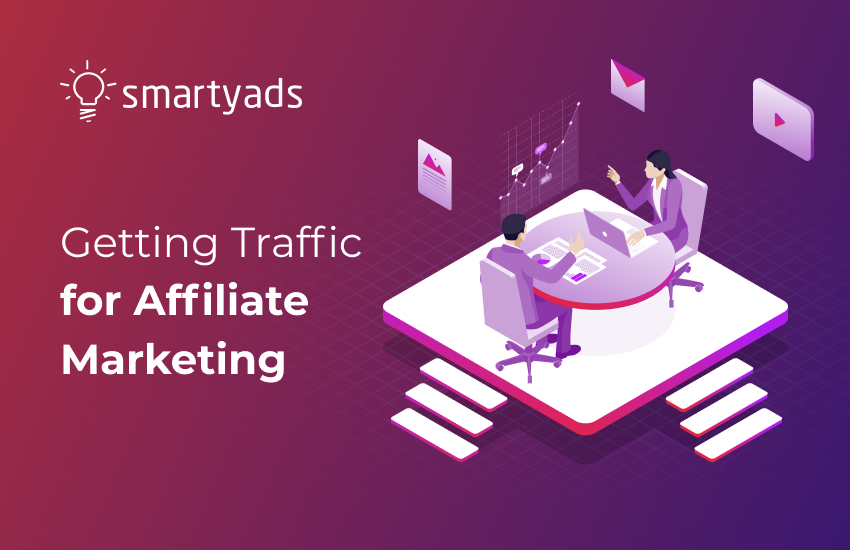
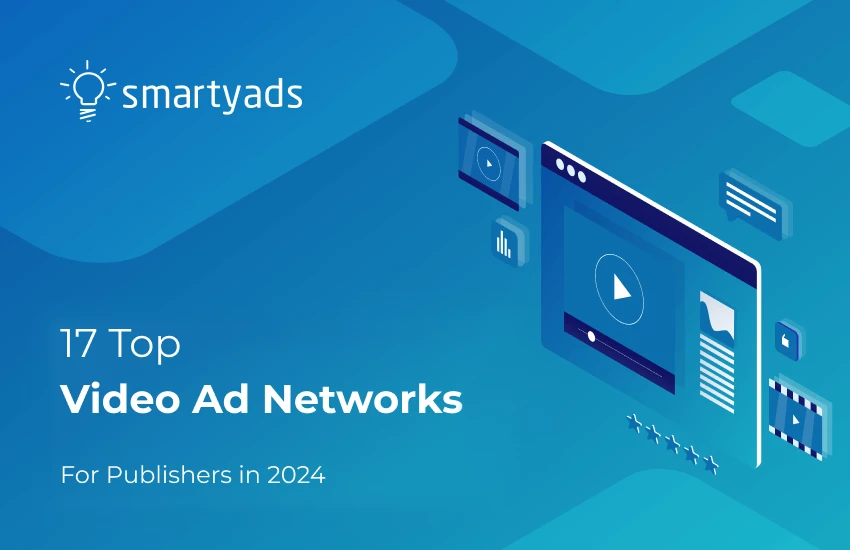
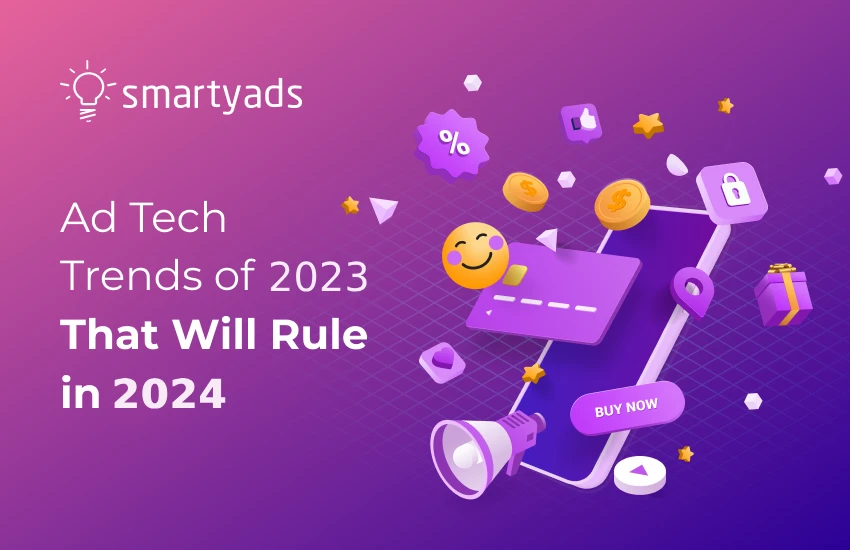
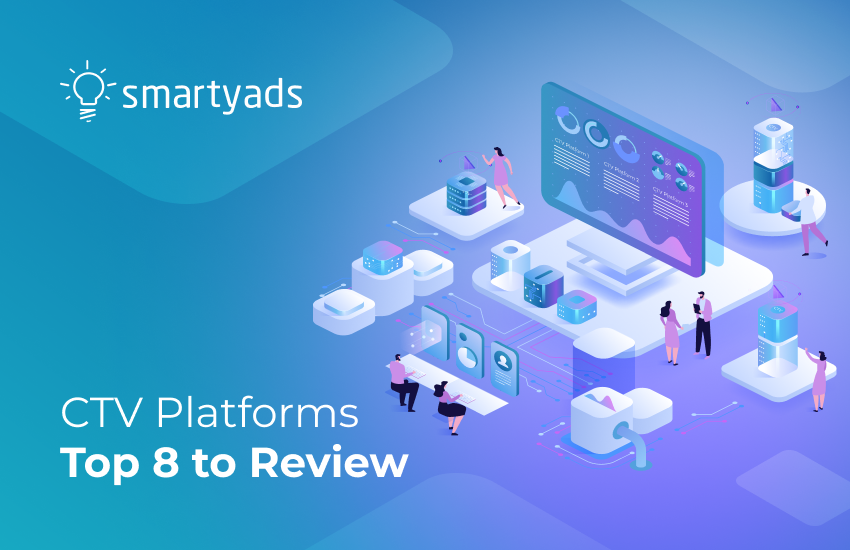
![12 Best eСommerce Advertising Platforms in 2023 [Ranked & Reviewed]](images/ecommerce-ad-platforms.png)